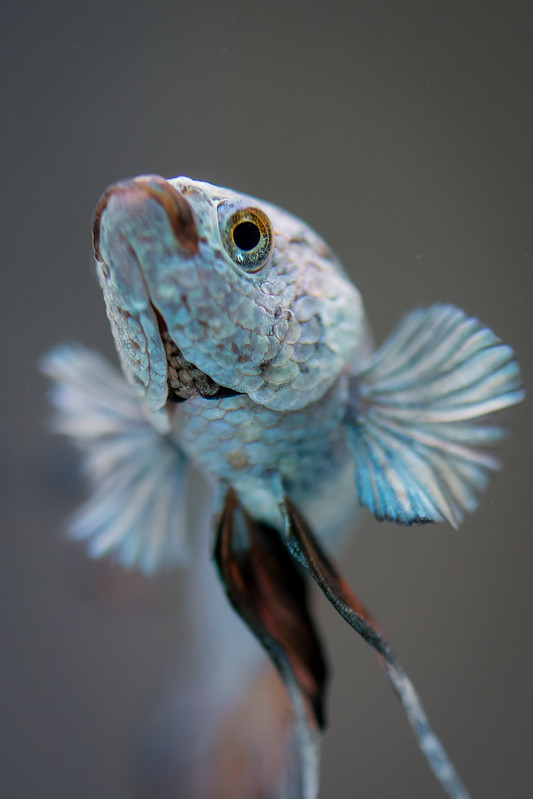 |
| Photo: Flickr - Gomagoti |
As many of you may already know, Betta fish originated in Thailand and bordering nations, and were originally bred for fighting, not for show. In fact, roughly 150 years ago, Betta fish fighting was actually taxed and regulated by the king of Siam (Siam is now called Thailand, and is where the “Siamese Fighting Fish” title comes from). Bets would be placed on a simple fight between two little fish in which men might wager their money, homes, and even children on the outcome. Despite being an understandably opposed practice today, prize-fighting Bettas had relatively cushy lives: After a Betta had won a single fight, he was usually retired and allowed to breed thereafter.
It is also worth noting that these Betta fish fights were not (thankfully) to the death, instead the first fish to retreat was determined the loser. As such, the Siamese would breed these fish based on the “bravest”, largest, and strongest/most aggressive fish instead of the colors and flowing fins they are bred for today. In fact, the Betta of this time were generally dull-colored and flowing fins were seen as undesirable because they were easier for an enemy fish to bite it.
It was not until 1896 that Bettas began to appear outside of Asia, when a few breeding pairs were introduced in Germany, and not until 1910 did the species start to show up in America. Though scientist Frank Locke of San Franciso received several Betta Splendens, he thought he had discovered a new species when one of his fish had longer, red fins. In fact, what he was actually seeing was the first of a natural mutation in the Betta Splendens species that gave them more color. Since then, these fish have been bred increasingly for color, fin size/shape, and a favorable demeanor and raised to be sold as household pets, not fighters.
But it took some time to get here, and Bettas even today are continuously bred for new color combinations and such. What’s more incredible, is that the fish species really only has a few base colors in its genetic code, but combining these has produced the wide array of fish we see today.

No comments:
Post a Comment